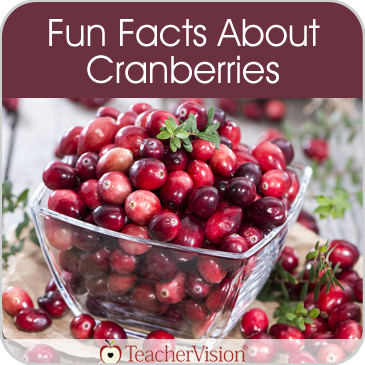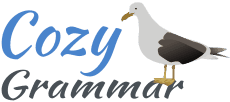It’s Wednesday, and time for Homeschool Resources: Language Arts Resources! As I prepare Charlie for this morning’s lessons, I wanted to share a few new websites with you. If you’ve used these in the past let me know what you thought of them and why.

Age Range: 8-10 (Grades 3-5, with parental supervision)
Cranberries – Read All About It! At this site you can read lots of information about Cranberries including the origins of the name, how Native Americans used them, and best of all – fun facts about cranberries.
For example, did you know that Native Americans made a survival cake out of deer meat and cranberries called “pemmican”? Did you know that Americans consume some 400 million pounds of Cranberries each year? About 80 million pounds – or 20 percent – are gobbled up during Thanksgiving week! For more fun facts visit the site!
Have fun solving this Thanksgiving word search puzzle that you can print or do online. The information and words you learn from reading fun facts about Cranberries will help you to recognize words like: “cranberries, “Pilgrims,” and “Plymouth” and more.
Make Beliefs Comix- Age Range: All (All grades; children with parental supervision)

This website, launched by author and journalist Bill Zimmerman, offers a perfect demonstration that playing is learning.
It’s easy, fun, and educational to create your own comic strips! Visitors who use this interactive comic strip “game” will simultaneously practice and improve their language arts skills including, reading, writing, spelling, and creative thinking. Young and old, and everyone in between, will enjoy arranging these cartoon characters and putting words into their mouths.
To get started right away, click on “Create Your Comix!” Then select:
Characters
Masks
Balloons & Prompts
Greeting Cards
Words
Objects
Backgrounds
Background Color
If you like, you can make your comic strip up to 9 panels long. But here’s the best part: you get to decide what to write in the word or thought balloons that accompany your comics. It’s amazing what children can write when it’s this much fun!
On the top menu bar, under “Create Comix!”, you’ll find detailed instructions on how to create your comic along with story ideas. There are quite a few story starters, including Travel to a Mysterious Place, A Day at School, Finding Your Courage, and many more!
After you have created your comics, you can print them out. Assemble them into a book, display them on your wall, or use them to create your own greeting cards. You can even email them to a friend and to yourself. And don’t forget to send a copy to Grandma.
Also, be sure to check out the many Language Arts resources under “Writing”, “Teachers”, “Parents”, and more from the top menu.
![]()
Age Range: 5-11 (Grades K-6, with parental supervision)
This ad-supported website offers several interactive games to help young children learn and practice basic language arts skills.
When you get to the site you will see the menu of games including:
Little Bird Spelling – Choose a grade level and then choose a bird house. This game will check spelling of the words listed.
Phonics Pop – Choose a set or group of sounds then pop the bubble of the sound heard.
The Dinosaur’s Eggs – Select a pattern, listen to the word and select the correct egg.
And more!
Also check out the math games to play under the link entitled Math Games.

Age Range: 5-18 (Grades 1-12, with parental supervision; non-readers will need assistance)
This site is a hoot! A father named Dave and his six-year-old son Isaac collaborated to create this free game to challenge your knowledge of homonyms, homophones, and puns.
As explained at the website, “Homonyms are words with the same sound and spelling but different meanings. Homophones are words with the same sound but different spellings and meanings. Puns are homonyms and homophones that are funny.”
When you get to the site, look at the pictures and read the rhymes for clues to guess the right homonym, homophone, or word that solves each puzzle. The original illustrations are pure whimsy, and the rhymes are pretty “punny.”
We tried about 12 or 13 puzzles for this review. We are not sure how many are there in total, so if you visit the site and get to the end, let us know how many are there.
To learn more about the creators, Dave and Isaac, you can scroll down to the “About This Site” section on any page. And you can even submit your own puns.
This is just too cute for words. Maybe it will inspire you and your kids to design some entertaining learning games too.
Age Range: 9-18 (Grades 4-12, with parental supervision)
This ad-supported website offers you the opportunity to boost your vocabulary and help end world hunger.
For each word you get correct in the online vocabulary quiz, 10 grains of rice are donated through the United Nations World Food Program to help feed the hungry. The best explanation of the concept comes directly from the website:
Freerice has two goals:
Provide education to everyone for free.
Help end world hunger by providing rice to hungry people for free.
This is made possible by the sponsors who advertise on this site.
Freerice has a custom database containing thousands of words at varying degrees of difficulty. There are words appropriate for people just learning English and words that will challenge the most scholarly professors.
Freerice automatically adjusts to your level of vocabulary. It starts by giving you words at different levels of difficulty and then, based on how you do, assigns you an approximate starting level.
You then determine a more exact level for yourself as you play. When you get a word wrong, you go to an easier level. When you get three words in a row right, you go to a harder level. This one-to-three ratio is best for keeping you at the “outer fringe” of your vocabulary, where learning can take place.
If you have more questions, check out the FAQs at the website. This is an ingenious idea and it’s lots of fun to participate.
Age Range: 6-14 (Grades 1-8 approximately, with parental supervision)
At this website, students can study and practice their spelling and vocabulary lists in a variety of fun ways without having to wait for mom to be available.
Quickly select from the many prepared lists based on the classic McGuffey’s Eclectic Spelling Book, by W. H. McGuffey and use in your lesson planning. You can construct your own lists but when you create a free account you can save and edit your lists and then select them later as needed.
To start right away, scroll down to “3. Practice AAASpell.com Spelling Lists” on the home page. Click on the link and then choose your grade, then a lesson, then “Click here to practice…”
Some of the self-correcting activities that can be utilized are:
Hear and Spell: Listen to the word and then spell it. (Note that only words with available audio will be used for Here and Spell. Words available with audio are indicated on the sidebar after creating your new list.)
Missing Letters: Spell the word correctly by adding one or two letters.
Spell the word: The word is shown, and the student copies it.
Guess the Letters: Find the word by guessing letters.
Scrambled Letters: Spell the word correctly by unscrambling the letters.
And several other study methods to keep the learning fresh.
Instant feedback is given. If the student answers incorrectly, the correct answer is displayed, reinforcing spelling and vocabulary skills.
Whether practicing spelling lists, exploring new vocabulary, or learning alphabetical order, this website is an excellent addition to your education toolbox.
Cozy Grammar – Free Spelling Course

Age Range: 10-13 (Grades 6-8 approximately, with parental supervision)
This commercial website that sells Language Arts curriculum packages developed by a long-time classroom teacher, offers a free, thirty-six-week spelling course appropriate for the 7th grade level.
When you get to the site, sign up to enroll and review “How This Course Works” for directions and tips on the best way to tackle the course that includes:
Pre-Test
Exercises
Dictation Sentences
Final Test
The lessons cover:
Plural Nouns
Suffixes
Prefixes
Doubling The Final Consonant
Possessive Forms
Contractions
Capitals
Letters and Syllables
Special Words (i.e., Compound Words, Root Words, Synonyms, Antonyms, Homonyms)
You’ll also find a list of “Spelling Rules” that may be handy to print out and have around the house.
Age Range: 4-14 (Grades Pre-K – 9, with parental supervision)
Friday, February 1, 2019, is World Read Aloud Day! Developing a love for reading within your children could be as easy as reading aloud to them regularly.
When you read aloud you show your children that YOU feel that reading is an important part of your life. Taking the time to discuss the text or problem solve the character’s current dilemma or even guessing the end to a good book can help to strengthen their ability to concentrate for a period of time, to solve problems logically, and to express themselves clearly.
When we continue the practice of reading aloud past the early years to our children we see their vocabulary, language, grammar and writing skills prosper.
Children can become aware of other places and other lives through the books we read to them. The benefits are enormous – reading aloud creates life-long readers.
We located a wonderful list of recommended titles for reading aloud. It should be noted that even though there is a lot of good information here the purpose of this website is to sell books, though you are not required to purchase any. You can check out these titles at any library and still use them in the ways suggested.
When you get to this ad-supported website, you’ll find an interesting article about reading aloud to students. The article is written to classroom teachers and discusses the beginning of the school year, but all of the information contained here is easily adapted to homeschoolers.
On the left sidebar you’ll see a list of read-aloud titles categorized by curriculum area and grade. Each title comes with a short synopsis of the book and springboard ideas to other reading selections.
One of the things we like best about this list is that the author takes time to help the “instructor” (in this case, we, parents) to understand how and when to progress to more complex books.
Don’t stop on the Read Aloud page though. Bookmark this site and come back often to use the many free resources for teaching children, preschool through middle school, across the curriculum.
Thank you,
Glenda, Charlie and David Cates